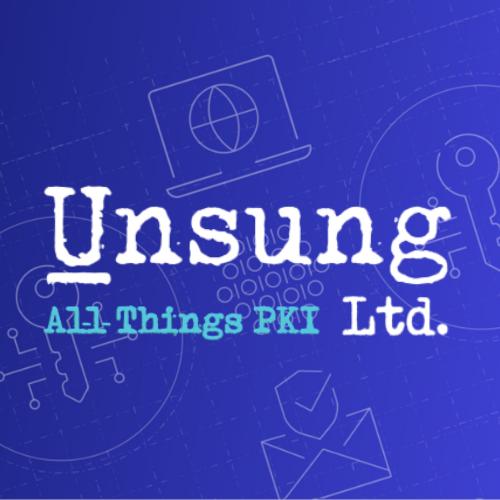What is Certificate Lifecycle Management – CLM Series Part 1
Digital certificates sit at the heart of modern security. They authenticate identities, encrypt communications, and underpin trust between systems, applications, and users. Whether enabling secure online transactions, protecting sensitive data, or supporting regulatory compliance, certificates are a critical part of today’s IT environment.
However, the growing scale and complexity of digital infrastructures make managing certificates a significant challenge. Cloud migration, hybrid architectures, microservices, and zero-trust security models all demand a higher volume of certificates, often with shorter lifespans. Without the right tools and processes, organisations risk outages, security breaches, and operational inefficiencies.
Certificate Lifecycle Management (CLM) addresses these challenges by providing a structured, automated framework for overseeing certificates from creation to retirement.
Understanding CLM
CLM is the process of managing digital certificates throughout their entire lifecycle:
- Issuance – generating and deploying certificates from trusted Certificate Authorities (CAs)
- Renewal – replacing certificates before expiry to avoid downtime
- Revocation – invalidating certificates when they are compromised or no longer required
- Replacement – updating certificates to meet new security or compliance standards
This lifecycle applies to both public-facing certificates, which underpin customer-facing services, and internal certificates, which secure connections between internal systems and devices. In both cases, certificates have finite lifespans and must be tracked and maintained carefully.
A modern CLM solution centralises this process. It replaces manual methods such as spreadsheets or ad-hoc tracking with automated discovery, monitoring, and orchestration. This means IT teams can maintain visibility over their entire certificate inventory, enforce consistent policies, and automate renewals before issues occur—all from a single, integrated platform.
Why It Matters
Digital certificates may be small files, but their operational importance is significant. When managed poorly, they can become single points of failure across critical systems.
Without CLM, organisations risk:
- Unexpected service outages – expired certificates can instantly take down websites, APIs, or applications.
- Security vulnerabilities – compromised certificates that are not promptly revoked can be exploited to gain unauthorised access.
- Compliance failures – in regulated industries, missing or outdated certificates can result in audit failures and penalties.
- Operational inefficiencies – manual tracking consumes valuable IT resources and increases the likelihood of human error.
Gartner estimates the average cost of IT outages at $5,600 per minute. One high-profile example occurred in September 2020, when an expired authentication certificate caused a three-hour global outage of Microsoft Teams, disrupting millions of users worldwide. This incident highlights how even the most mature and well-resourced organisations can be affected by certificate management failures.
Drivers for CLM Adoption
The demand for effective certificate management has grown sharply, driven by a combination of technological, operational, and security trends:
- Cloud-native applications and microservices – each service may require its own certificate, dramatically increasing the total number in use.
- DevOps pipelines and automated deployments – faster release cycles require equally fast, automated certificate provisioning and renewal.
- Zero-trust security models – every connection must be authenticated and encrypted, placing certificates at the centre of secure architecture.
- Shorter certificate validity periods – proposals such as Google’s 90-day limit for publicly trusted certificates will increase renewal frequency and operational load.
These shifts mean more certificates, shorter lifespans, and a greater need for precise, scalable management. In this environment, automation is not a convenience—it is a necessity for security, compliance, and operational continuity.
Key Benefits
A robust CLM system delivers value well beyond simple tracking. Implemented effectively, it can:
- Provide complete visibility into certificate inventories – maintain a single source of truth across all environments, including cloud, on-premises, and hybrid deployments, with the ability to identify and act on anomalies quickly.
- Enforce consistent security policies – ensure all certificates meet organisational and regulatory standards for key length, encryption algorithms, and validity periods.
- Reduce manual errors through automation – eliminate human mistakes that occur with spreadsheet-based or ad-hoc management, such as overlooking renewal dates or deploying misconfigured certificates.
- Ensure timely renewal or replacement – automate renewals before expiry and streamline replacement processes when security or compliance requirements change.
- Integrate with security monitoring tools – feed certificate data into SIEM and threat detection systems to enhance incident response and identify suspicious activity related to certificate misuse.
Conclusion
Certificates are small in size but critical in function. In an environment where outages and breaches carry immediate financial and reputational consequences, CLM is not just an operational upgrade—it is a strategic investment in security resilience.
Organisations that adopt CLM benefit from greater operational visibility, reduced risk exposure, and the agility to adapt to evolving digital demands. By embedding automation and policy enforcement into certificate management, they can maintain trust, safeguard services, and operate with confidence in an increasingly complex IT landscape.



